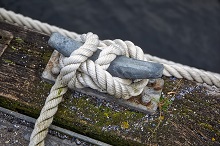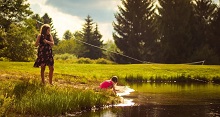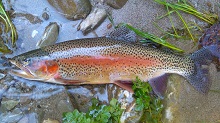Hydropower Dams Stopping Fish Migration
Canadian Angling.com (Feb 11, 2013) Scientific studies recently have discovered that state of the art hydro dams, that were supposed to allow migratory fish (like steelhead, rainbow, brown trout, salmon, herring) to swim upstream to spawn, have failed to allow the fish upriver. This is amazing since there was fish passage systems (fish ladders), built into the dams. This has further ramifications as more hydro dams are planned worldwide. The study was completed by a research team that included Dr. J. Jed Brown (Abu Dhabi), and fisheries ecologist Dr. Karin Limburg and published in the Conservation letters January 17.
What the economists and ecologists found was that there was only a small percentage of the spawning fish using the fish passage systems and this has been happening over decades. Dr. Brown said that “It may be time to admit failure of fish passage and hatchery-based restoration programs and acknowledge that ecologically and economically significant diadromous species restoration is not possible without dam removals,”
The team studied three large river systems, Susquehanna, Merrimack, and Connecticut. These 3 river systems have a large population of fish that migrate from the sea to rivers to spawn (called diadromous fish).
Limburg stated that: “Once these rivers supported tens of millions of pounds of biomass of these species and provided valuable protein to a growing nation.” The research team used data collected by different agencies since the early 1960’s and showed that these state of the art fish passage systems have been a failure. The fish that do pass through the systems are way below the stated targets for these rivers. Some of these systems have hundreds of dams on them and the finding show that the hydro dams on the main stems of rivers have the highest impact.
A good example is on the Saugeen River in the fall. The migratory salmon are running up the river and make it over some dams to Walkerton. There is a fish ladder there but we have never seen one fish use this fish ladder. Many attempt to jump river over the dam and smack into the concrete wall. The MNR have actually transported steelhead from the dam at Denny’s Dam in Southampton to the south Saugeen River to spawn in the spring time. Conversely, on the Sydenham River there is another fish ladder in Owen Sound, and some salmon do use it to make it up the river.
At one time, the American shad was one of America’s top food fish but only 2% of the amount that should be passing through the Merrimack River and almost nothing on the other rivers in the study. While some spawning does occur downstream of these dams (high mortality rate), the fish require habitat further upstream to spawn. This is where their offspring will have the highest survival rate, in the cooler, nutrient rich, upper streams.
Dr. Adrian Jordaan (University of Massachusetts Amherst) said: “These dams are contributing to reduced resilience of not only shad, but all diadromous species. The result is that other factors including climate change will have a greater impact on these populations that are at fractions of their historical levels.” A good example is the river herring. At one time its populations were in the hundred of millions in these rivers but now average about a thousand.
Dr. John Waldman (Queens College) stated: “The consequences of the use of these failed technologies include declines in diadromous species, but also an odd, self-perpetuation of attempts to mitigate dam impacts by continuing restoration programs despite their inability to show success. Not only are these losses felt locally, possibly with major ramifications to fishery and biodiversity resources, but in fact they translate into lost marine production and weakened marine food webs.” It is also very ironic, but sad, that one fish passage system with and educational centre, no fish went through…
The authors of the article support innovative solutions to the problem and hope that creative ideas to the issue can be found. Many developing nations will look at cheap hydro power over the next few years; like the Mekong and Amazon, and they should look at these results to find better innovative solutions to the problem.
Dr. Brown said: “Electricity from hydropower dams is considered mature technology that is seen as ‘green energy’ because it does not generate greenhouse gases.. Although hydropower dams are criticized for obstructing the movement of fishes and other creatures, many hydropower dams have fish passage facilities of one sort or another. These passage facilities appear to create a ‘win-win’ situation that allows us to enjoy both hydroelectricity and healthy fish populations. The problem is it doesn’t seem to work.”
by Wayne Sheridan for Canadian Angling



